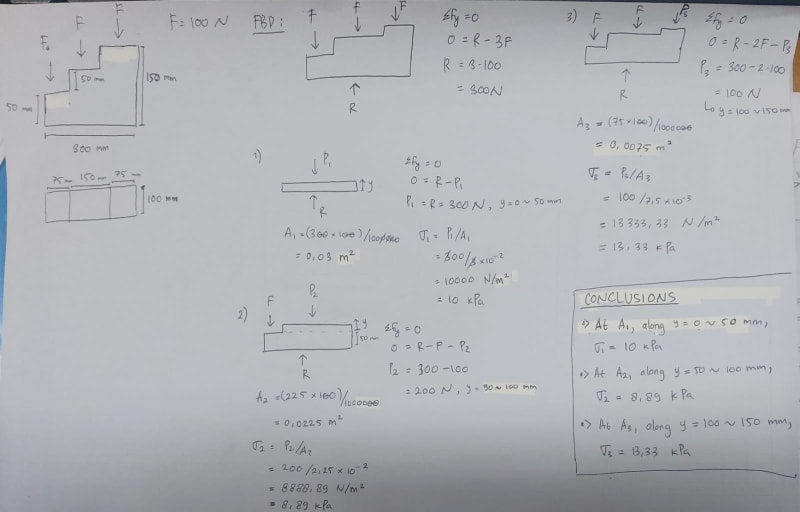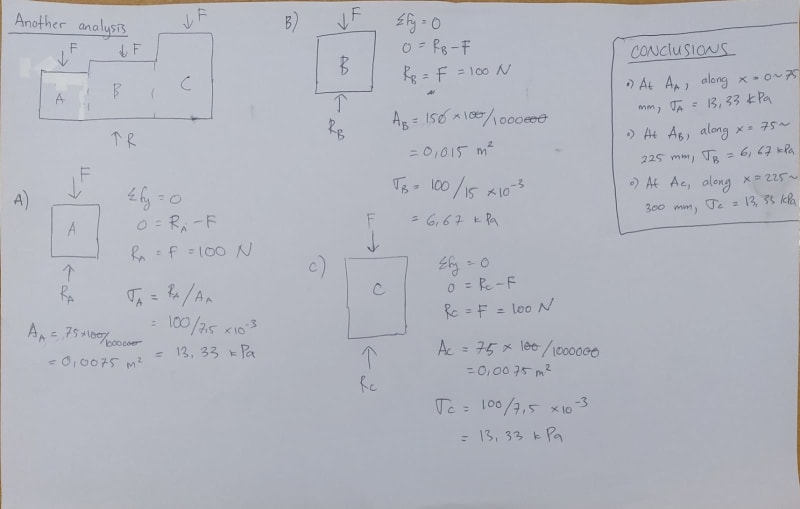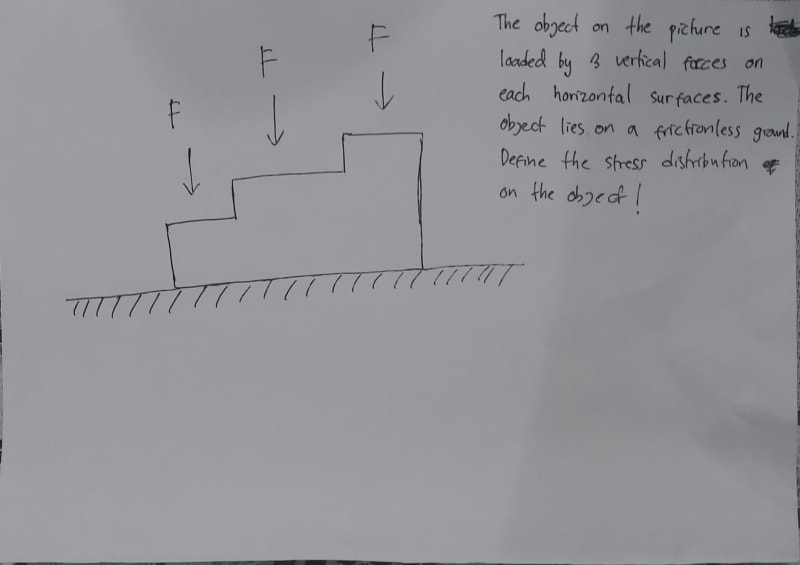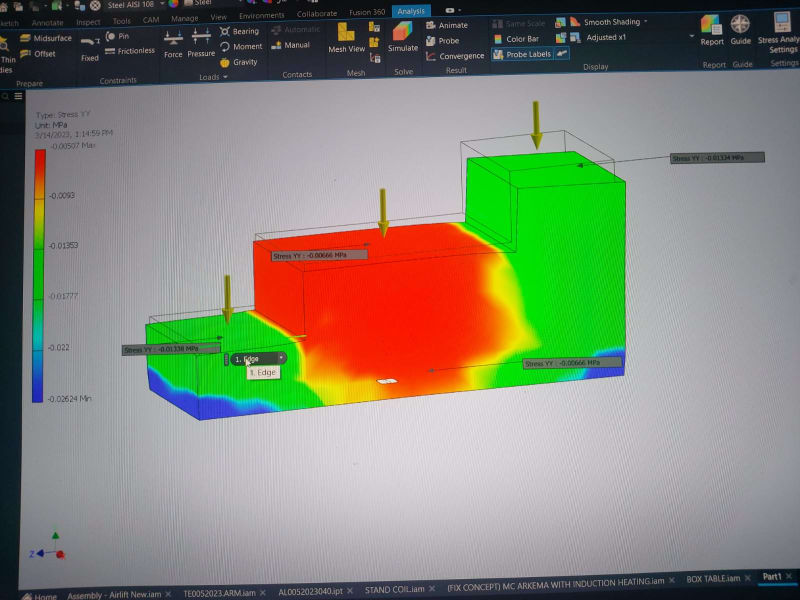Hey guys, so I'm trying to understand how stress analysis is done through hand calculation. The picture below shows my analysis of an example problem that I'd worked at.

From that picture, I got the value of the stresses on the object which are
σ1, σ2, and σ3. However, if I do the analysis differently as shown in the picture below, then...

I got a different value for the stresses which are σA, σB, and σC.
This got me confused, because I don't know which analysis should I use, and which distribution is the right one. Please help me solve this problem.
Thank you.

From that picture, I got the value of the stresses on the object which are
σ1, σ2, and σ3. However, if I do the analysis differently as shown in the picture below, then...

I got a different value for the stresses which are σA, σB, and σC.
This got me confused, because I don't know which analysis should I use, and which distribution is the right one. Please help me solve this problem.
Thank you.


